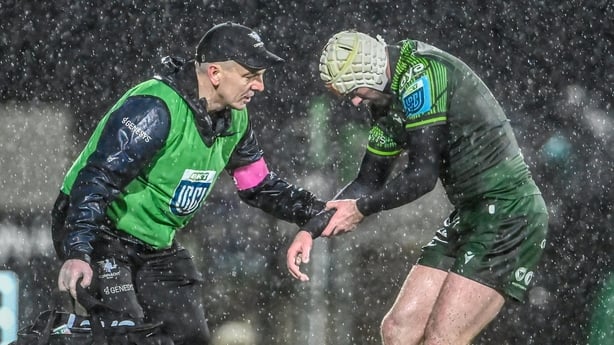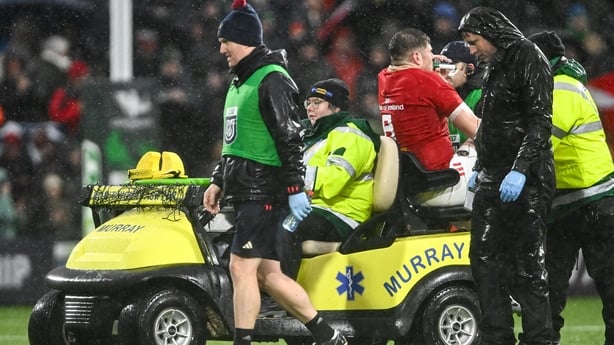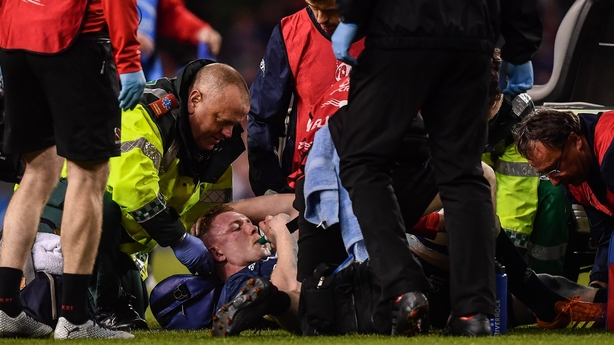The Investec Champions Cup resumes this weekend with some eagerly anticipated contests between the giants of European rugby.
Former winners Ulster take on the gigantic challenge of hosting Toulouse, while Munster and Toulon will do battle in France.
Stade Francais are tasked with disrupting Leinster's 100% record in Europe, while Connacht will hope to bring their winning edge to Lyon.
Mixing the domestic competitions also means that the refereeing pool becomes larger, with URC, Top 14 and Premiership officials taking charge of teams from other nations.
The consequence of that could be varying perceptions around the laws of the game.
Those laws are already becoming difficult to understand and manage, and when you add influences from other unions into the mix, it becomes an area of the game that could swing a tie.
The Irish inter-provincial games brought enough controversy, with a number of long-term injuries resulting from collisions that could be interpreted as anything from 'highly dangerous’ to ‘rugby incidents’.
Munster backrower Jack O’ Donoghue is facing an extended period on the sideline as a result of an inaccurate action at the breakdown, while Connacht’s Mack Hansen was involved in a similar incident that went further under the radar before it was confirmed yesterday he will miss the Six Nations.

Munster prop Oli Jager left the field in a neck brace following a double tackle that he was sandwiched between those two incidents
Byron Ralston’s clear out on O’Donoghue illustrates, in my opinion, why the ruck laws are no longer fit for purpose. (Ralston was today suspended for three games after being found guilty of dangerous play).
For clarity, I’ve stated publicly and still believe that there was no malice in Ralston’s actions. This is not a witch hunt on a player.
However, when a law is so vaguely written that it allows a player to "angle in", as long as they straighten up through the contact, you’re increasing the probability of injury.
Another guideline states that a player must "drive not dive", but that is never sanctioned once there’s a collision initiated.
Ralston missed the shoulder of O’Donoghue and the next surface that he could hit was his opponent’s knee, which was already locked out.

Given the downward trajectory of the clear out and the poor accuracy of the contact, it has resulted in a long-term injury for a player.
There has been some online hysteria and outrage among some Munster supporters, but the incident involving Hansen has also provoked much debate.
That was also a 45-degree entry that never looked like it straightened up.
There are many more instances like this throughout each game that go unnoticed because nobody gets injured, and therein lies my issue.
Does it take a player’s career to be potentially ended before we start sanctioning these actions more consistently?
How many more injuries will it take before World Rugby make the job of referees a little bit easier and amend the laws to stop any side-entry actions?
Why are we allowing players to now come through at an angle before straightening up when there was zero tolerance for it before?
Nobody wins in these situations because the referee and tackling player are both in the limelight, while the injured players are facing extended periods on the sidelines.
It affects their earning potential, their long-term career and even the day-to-day life. I won’t even expand on the impact that injuries have on the overall health and mental wellbeing of professional players.
When it comes to the laws of the game, loopholes are found until they are amended: notably the offside law from kick chase where you no longer have to retreat to be put back on side. A player can simply wait until the catcher travels five metres before being back onside, somehow.
There are other laws that make the game far more dangerous for players welfare however, and they’re the ones that should continually be put under the microscope.
My issue is with the laws and what's allowed to be interpreted on the ground
All the contact laws seem to be weighted towards minimising brain injuries, and rightly so. Yet, we are forgetting or ignoring the fact that the ruck causes a huge number of limb injuries.
To reiterate, inaccuracies in competitive games from offending players and referees are not my gripe here.
Players have been getting away with these actions in most matches and will do so again.
With regards to referees, I’ve interacted with many of them in the past through the All-Ireland League, and it’s great to see development through the amateur league into the professional game.
My issue is with the laws and what’s allowed to be interpreted on the ground.
Too many grey areas have caused more pressure on the referees and arguments and confusion all round.
This was crystallised for me with a recent conversation I had with a referee. I was asking for clarity around side entries and despite looking at the same clip, we had different perceptions of what happened and where the contact was initiated.
I followed up with my player to confirm that my perception was similar to his, and that the proposed side entry made contact with his hip.
Luckily for my player, it was his hip and no injury followed.
In the Hansen and O’Donoghue examples, serious injuries have occurred, and more will happen unless we go back to zero tolerance for side entries.
Have we learned nothing from the horrific, career ending injury that Leinster and Ireland flanker Dan Leavy had to endure?

Don’t confuse my skin in the game with bias. I suffered a career-ending injury from a ruck, so it would be easy to think that this is a biased whinge.
But I was the poacher and I got folded in two by a much bigger man in a very legal way.
If I wanted to poach, I should have committed to it and not put myself in a dangerous position. I had no issue with the ruck laws on that day, although intermittently I foolishly wonder what might have happened differently if I never went into that ruck.
My hope is for more clarity with the contact laws. There is far too much discussion around instances in the game with an over reliance on the perception of referees or TMOs.
If we want to make the game safer, and continue to enjoy big European weekends like the two we have ahead, we need attack and defence to become the central conversation again and less discussions around the vague laws.
Listen to the RTÉ Rugby podcast on Apple Podcasts, Spotify or wherever you get your podcasts.
Watch Leinster v Stade Francais in the Champions Cup on Saturday from 4.45pm on RTÉ2 and RTÉ Player, follow a live blog on www.rte.ie/sport and the RTÉ News app and listen to live commentary on RTÉ Radio


